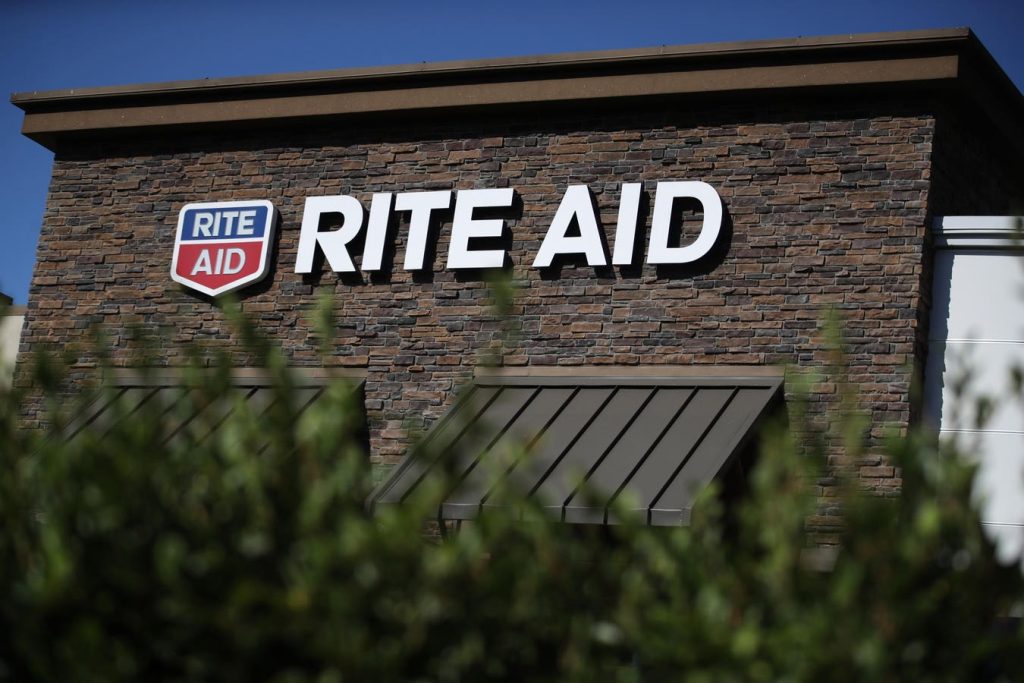Key Takeaways
- Rite Aid has filed for Chapter 11 bankruptcy protection, and has received a $3.45 billion lifeline from investors to help them plan their restructure
- The company has come under increased pressure for their high levels of debt, as well as ongoing litigation stemming from the opioid epidemic
Drugstore chain Rite Aid is seeking bankruptcy protection, with plans to divest a segment of its operations amidst financial problems and legal battles tied to opioids.
The firm assured that its stores would maintain their prescription services, and customers wouldn’t notice any interruptions to their services as they work their way through the Chapter 11 proceedings. This approach will also expedite its initiative to shut down stores that aren’t meeting performance benchmarks.
Embarking on Chapter 11 is a strategic move that will “significantly reduce the company’s debt” and will help them “resolve litigation claims in an equitable manner,” announced Rite Aid late Sunday.
Why has Rite Aid filed for bankruptcy?
Put simply, the company has been notching losses for years and has appeared to be on borrowed time. Those losses have been getting worse, and Rite Aid has said that it believes they expect to end this fiscal year in the red to the tune of $680 million.
One of their major ongoing problems has been legal battles surrounding the opioid epidemic. Rite Aid has been the subject of whistleblowers who alleged that the company filled “hundreds of thousands” of illegal prescriptions for a multitude of drugs, not just opioids.
While that has been an issue for the company, debt levels have been the issue which has caused them to file for bankruptcy. The company owed $8.6 billion as of June 3rd, against assets of $7.65 billion.
It’s also the victim of good old fashioned competition. It’s up against healthcare behemoths CVS and Walgreens, who are all making aggressive moves to widen their range of services. Rite Aid reportedly operates on slimmer margins than their major competitors, which left executives with concerns over the long term ability of the company to repay its debt obligations.
What does that mean for Rite Aid workers?
While it’s never a good thing to see mass layoffs, which there will be here as Rite Aid closes hundreds of stores, the pharmacy sector is crying out for workers right now. Staff at Walgreens recently staged a walkout over working conditions, many of which are related to the limited staffing numbers.
The labor shortage has been a problem in the industry for some time, and laid off Rite Aid workers will almost certainly be able to find new work quickly.
How did pharmacy stocks react?
For Walgreens, any positive shine from the collapse of a competitor has been overshadowed by their earnings miss late last week. The stock was down 3.35% on Monday as the market continues to process Walgreens Boots Alliance near miss in earnings per share, coming it at $0.67 against a forecast of $0.68.
That might not seem all that bad, but it’s understanding the context of recent years. Walgreens Boots finished their 2023 fiscal year with earnings per share of $3.98, which is substantially down from 2022 where they hit $5.04 and 2021 which notched $4.91. The trend is not one that investors want to see.
The stock closed out the day at $22.78, down from $24.38 just before the earnings call.
As for CVS, the stock price has been broadly flat over the past week, closing out Monday at $71.58. That’s been steady since the beginning of summer, but the stock is still down almost 23% since the beginning of the year.
So while it’s Rite Aid whos’ declared bankruptcy, it’s clear that the issues stemming from the opioid crisis and ongoing labor market problems are hitting the industry as a whole.
The bottom line
It’s clearly a challenging time for the pharmacy industry, but it’s worth making the distinction between retailers dealing with the general public, and wholesale pharmaceutical companies who make the drugs.
Retail in general is under pressure for many, many reasons. Economic turbulence is reducing consumer spending, and the previously discussed issues with the opioid epidemic are also making life difficult for drugstores.
As well as challenges with staffing, many retail stores are also having to contend with increasing levels of theft and vandalism.
Pharmaceutical companies on the other hand, the ones that make the drugs, are in a fairly solid position. Demand continues to rise and it’s one of the few defensive industries to be found during times of economic volatility.
Investors should make sure they are structuring their portfolio with these different characteristics in mind, and ensure they have sufficient diversification to ride out the ups and downs.
Read the full article here





